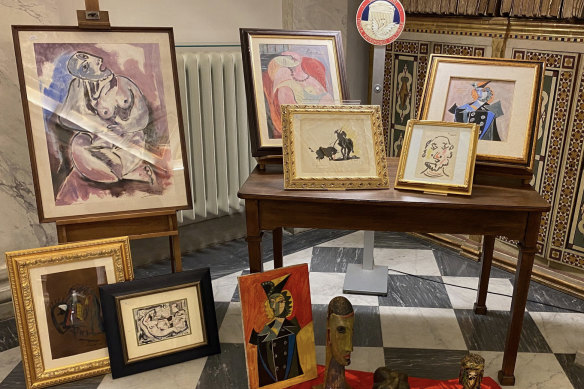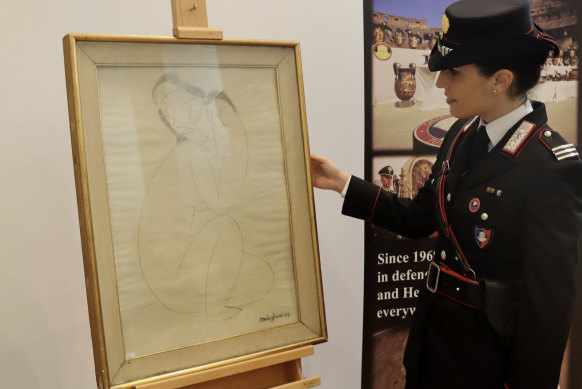
The police named the case Operation Caryatid after a sketch, purportedly by Italian artist Amadeo Modigliani, that was in the first lot of about 200 works seized from a Pisa businessperson in March 2023, a confiscation which led to the investigation of the Europe-wide ring.
Loading
The operation was co-ordinated by the Italian desk of the European Union Agency for Criminal Justice Co-operation, or Eurojust. The art police zeroed in on forgers mostly working in Italy and, in the case of Banksy, in Spain.
They tracked down fake works in auction houses throughout Italy, Eurojust said, and found others on auction house websites. The investigation also involves dealers who may have acted as go-betweens.
Because the case is still under way, officials said, no formal charges have yet been brought.
Some had probably acted “in good faith,” Galizia said, while others appeared to be complicit in the fraud.
Italian officials noted in a news release that one Pisa auction house had peddled works it claimed were by Wassily Kandinsky, Paul Klee and Piet Mondrian for about €4000 each, even though pieces by such artists “normally sell for millions of euros at international auctions”.

Fake works billed as Picassos include paintings and sculptures.Credit: Arma dei Carabinieri via The New York Times
The seized artworks will either be destroyed or used for “didactic purposes”, Galizia said.
The pieces on display this week are being exhibited in a riverside palazzo that houses Pisa’s state archives. Arranged by artist, the works include copies of sculptures by Alberto Giacometti, oil paintings by Mondrian and prints by Warhol.
In a way, said Jaleh Bahrabadi, the state archives’ director, it was fitting that a place entrusted with preserving history’s primary sources should showcase fake art, putting something authentic alongside something spurious.
“It’s incredible but beautiful,” she said.
A table in the centre of a room lined with Banksy works reveals the tricks of the forgers’ trade: tubes of paint, spray cans and a Banksy rubber stamp used to “authenticate” the works, one of around 50 such stamps investigators confiscated. A display case features dozens of fake “certificates of authenticity.”
Many of the seized Banksy works were stamped Dismaland – the dystopian theme park that the artist opened in 2015 in his UK hometown of Bristol.

A seized forgery of an Amadeo Modigliani sketch called Caryatid, which lent its title to the police’s anti-fraud operation. Credit: (Italian Culture Ministry via The New York Times
“If they had that stamp, they were automatically false,” said Stefano Antonelli, an art historian who was tasked by the police with verifying hundreds of Banksy works that turned out to be fakes.
Many were sold for a fraction of the price that originals would get on the art market, he said, and several were not copies but Banksy “interpretations”.
Such fakes are common, as Pest Control Office, which represents Banksy, warns on its website. It offers advice to anyone looking for pieces credited to the artist: “Always remain sceptical.”
This article originally appeared in The New York Times.
Get a note directly from our foreign correspondents on what’s making headlines around the world. Sign up for our weekly What in the World newsletter.



























